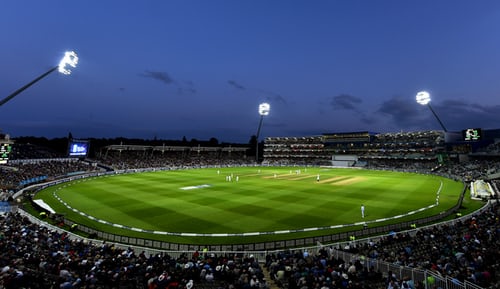The Biggest Stadiums in European Football
Euro 2020 will be hosted by 11 cities in 11 countries in a new format which dovetails perfectly with a post-pandemic world.
The excitement for the tournament will be felt right across the continent and some magnificent arenas have been selected to host the unfolding magic. A glance at the Euro 2020 betting favorites reveals some juicy insights into the biggest stadiums in Europe
Before the European Championship kicks off, we take a look at the top five biggest football stadiums in Europe.
Stade de France (Saint-Denis, 80,051)
On July 2nd, 1992, the International Federation of Association Football (FIFA) selected France to organize the FIFA World Cup in 1998. With no stadium in France larger than 45,000 at the time and the French needing something close to 70,000+ to host the tournament, the Stade de France was constructed. Work on the stadium started in 1995 and it took 31 months to finish. The stadium was officially opened on the 28th of January 1998. A friendly match between France and Spain was the first game. Zinedine Zidane scored the first and only goal of the match. It has since hosted two UEFA Champions League finals and hosted the finals of Euro 2016 which France lost to Portugal. The Stade de France is the primary stadium for the French national team and it is the largest stadium in France.
Luzhniki Stadium (Moscow, 81,000)
The stadium was originally built in 1956 and on the bank of the Moskva River opposite the Vorobyovy Gory landmark. Until 1991, it was called the Lenin Central Stadium. It has been the Soviet Union’s and Russia’s largest stadium. It has played host to some highly acclaimed tournaments. It hosted the opening and the closing ceremonies of the 1980 Summer Olympics, the first Olympic Games in the country’s history. More than 3,000 games have been played at the Grand Dame including the 2018 World Cup for which the stadium was reconstructed. The work started in 2013 after Russia won the rights to host the tournament. Despite its reconstruction, the stadium was designed to preserve its historical magnitude. It has hosted Ice Hockey and Athletics games.
The New Santiago Bernabeu (Madrid, 81,044)
It has been over a year since Real Madrid played their last game at the Santiago Bernabeu. Los Blancos have been playing their games at Estadio Alfredo Di Stefano which normally belongs to the youth team. The reason for this is because President Florentino Perez undertook the project to expand the already world-class 81,044 seater stadium. Initially constructed in 1947, the new renovation project will cost at least 575 million Euros. The whole front view of the stadium has changed, the new pitch is retractable, and there is said to be a casino somewhere in the engineering scheme. It is believed that the new stadium will increase the Madrid club’s revenue by at least 120 million Euros. No wonder grandpa Perez was desperate for that European Super League to go through.
Wembley Stadium (London, 90,000)
Wembley Stadium is the second-largest stadium in the world and it is the official stadium of the English national team. It was built in 1923 but it was demolished in 2003. The construction of the new stadium was built in the same spot and took 4 years to complete, with work finishing in 2007. The new stadium was designed by architecture firms Foster and Partners and Populous and the project is estimated to have cost a total of 757 million pounds. It possesses a 133 metre tall arch, with a span of 315 metres. It is the longest single span roof structure in the world.
Wembley is owned by a subsidiary of the Football Association (FA) and it is used for football, rugby, various sports, and also for musical events. It hosted the 2011 & 2013 UEFA Champions League finals and it will host the competition’s final again in 2024. Wembley is used for FA Cup finals, Carabao Cup finals, and the Community Shield. It will also host the England games at Euro 2020.
Camp Nou (Barcelona, 99,354)
Camp Nou officially opened its gates on the 24th of September 1957 after taking three years for construction and it has been the home of Barcelona since then. Camp Nou replaced Les Corts as the official stadium of the Catalan club. Before the name Camp Now, it was referred to as Estadi del FC Barcelona. The Camp Nou project cost around 288 million pesetas, meaning the club would spend the following years heavily in debt. It hosted the European Cup final between AC Milan and FC Steaua in 1989 and the famous UEFA Champions League final between Manchester United and FC Bayern in 1999. Camp Nou is the largest stadium in the world.
